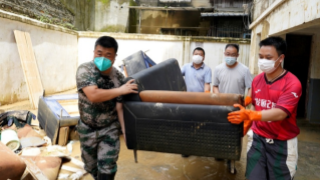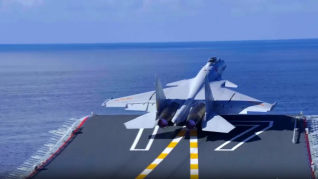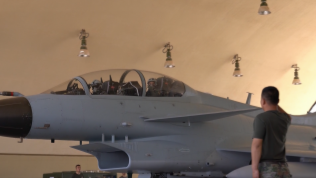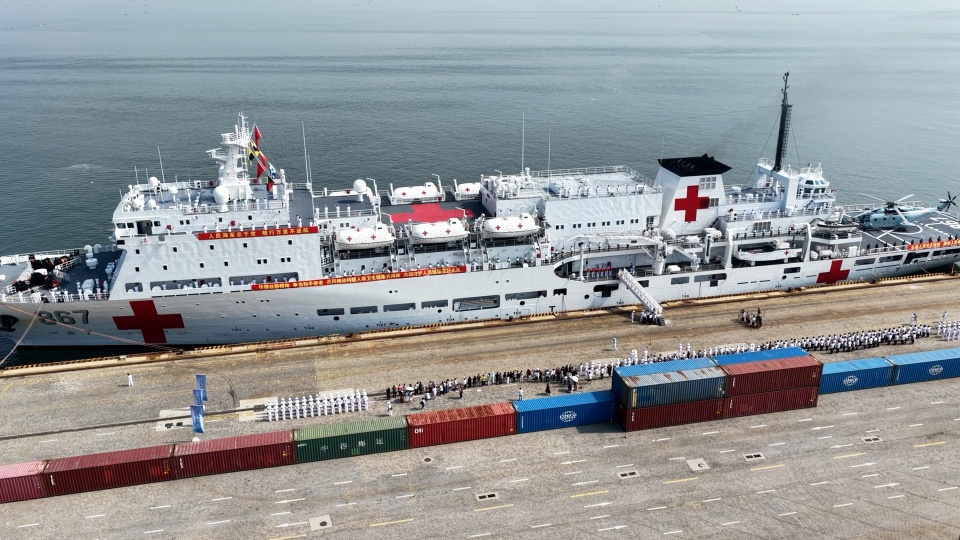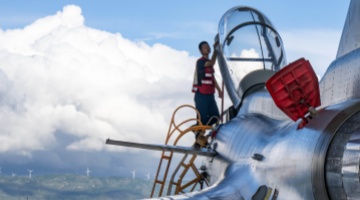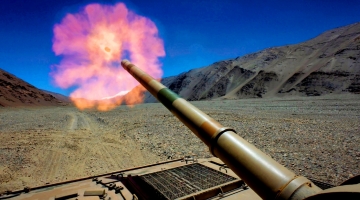By Zi Ge

File photo shows a Japan Self-Defense Forces (JSDF) member adjusting and testing a drone during an exercise.
Japan's Ministry of Defense has decided to procure approximately 310 small suicide drones by 2027 and deploy them to the Japan Ground Self-Defense Force (JGSDF) units assigned to missions in the southwest to destroy potential adversaries' vehicles, ships, and other targets, according to Japanese media reports. The large-scale procurement and deployment of attack drones by the Japan Self-Defense Forces (JSDF) highlight a shift in its defense strategy toward a more proactive offensive approach.
Arming the units in the southwest
Considering the extensive use and effective combat performance of drones in the Russia-Ukraine conflict, the Japanese Ministry of Defense believes it is necessary to accelerate the deployment of attack drones and expedite the selection and procurement process, according to Japan's The Sankei Shimbun. It is reported that Japan's Ministry of Defense has allocated 3.2 billion yen (approximately USD 20.6 million) in the 2026 defense budget for the purchase of small suicide drones.
The report also mentioned that the drones will be assigned to the JGSDF units responsible for the so-called "island seizure" operations and remote island defense in the southwest. It is reported that units under the Amphibious Rapid Deployment Brigade stationed at Sasebo Naval Base in Nagasaki Prefecture may be among the first to receive these drones. In future "island seizure" operations, Japan's amphibious forces could use small suicide drones as a supplementary firepower option for coastal defense missile systems or anti-landing equipment to conduct precision strikes on key targets.
Accelerating unmanned warfare plans
In recent years, Japan has placed great emphasis on the application of unmanned weapon systems and prioritized the development of unmanned combat capabilities as a key focus for defense capability enhancement over the next decade. The three security policy documents approved by the Japanese Ministry of Defense in December 2022 specify that approximately 1 trillion yen will be invested in drone force development over five years starting from 2023. In its 2026 defense budget, in addition to funds allocated for small suicide drones, 41.5 billion yen has been allocated for large maritime surveillance drones, and 4 billion yen for shipborne drones.
Currently, Japan's Ground, Maritime, and Air Self-Defense Forces are all accelerating the deployment of drones. The Japan Maritime Self-Defense Force (JMSDF) announced in November 2024 that it would introduce 23 US-made Sea Guardian drones to enhance maritime reconnaissance, surveillance and intelligence-gathering capabilities. The Japan Air Self-Defense Force (JASDF) established a Global Hawk reconnaissance aviation unit in 2023 with 130 personnel responsible for operating and maintaining large drones. The JGSDF also plans to gradually increase the number of attack drones. After the small suicide drones are put into service, JGSDF will consider the deployment of large drones.
Analysts believe that Japan has multiple considerations behind its accelerated deployment of attack drones.
First, it can enhance combat deterrence. In recent years, suicide drones and integrated reconnaissance-strike drones have played a prominent role in regional conflicts. With the advancement of swarm and artificial intelligence technologies, drones have become a crucial factor in modern warfare. Against this backdrop, the Japanese Ministry of Defense has abandoned its previous mixed approach of self-development and procurement. Instead, it chose rapid deployment to strengthen its deterrence capabilities.
Second, it can reduce manpower requirements. The JSDF has long faced challenges in recruiting personnel. Drones can perform reconnaissance, positioning and fire guidance tasks, which can significantly reduce the need for human resources and minimize casualties.
Third, it can lower costs. Japan considers traditional weapon systems such as fighter jets and reconnaissance aircraft to be expensive both in procurement and maintenance. Drones are much cheaper and can effectively strike high-value targets such as tanks and warships, making them a cost-effective option.
Japan's large-scale procurement and deployment of attack drones indicate that Japan is stepping up the deployment of offensive weapons. The JSDF is gradually transitioning from a defensive force to an offensive one, a development that warrants close attention and vigilance.





